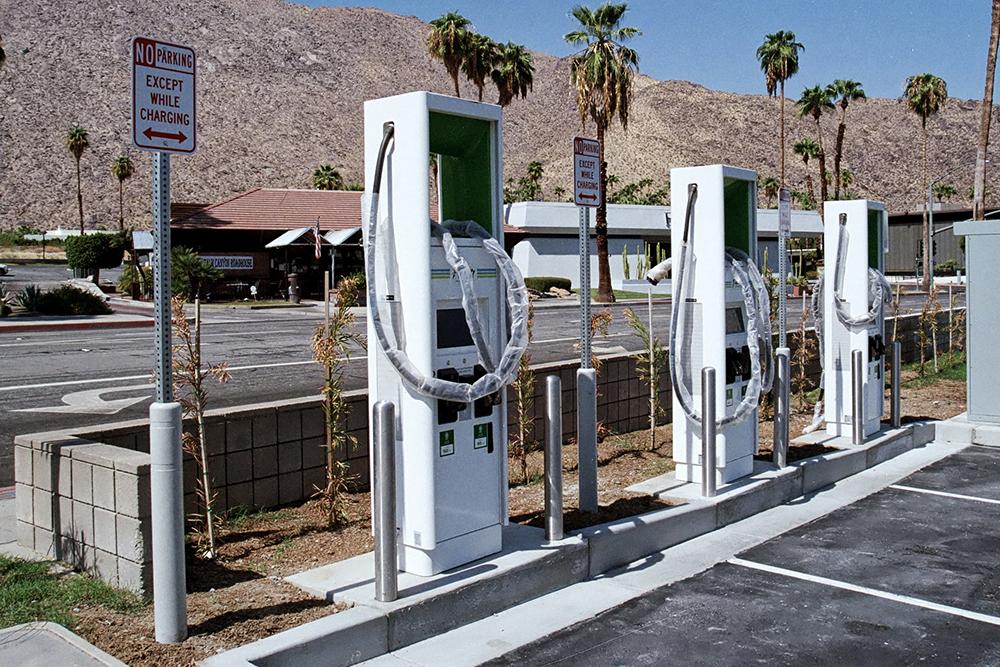
When the 2015 Paris Agreement set a long-term goal of keeping global warming “well below two degrees Celsius, compared to pre-industrial levels” to avoid the worst impacts of climate change, it did not specify how its nearly 200 signatory nations could collectively achieve that goal. Each nation was left to its own devices to reduce greenhouse gas emissions in alignment with the 2°C target. Now a new modeling strategy developed at the MIT Joint Program on the Science and Policy of Global Change that explores hundreds of potential future development pathways provides new insights on the energy and technology choices needed for the world to meet that target.
Described in a study appearing in the journal Earth’s Future, the new strategy combines two well-known computer modeling techniques to scope out the energy and technology choices needed over the coming decades to reduce emissions sufficiently to achieve the Paris goal.
The first technique, Monte Carlo analysis, quantifies uncertainty levels for dozens of energy and economic indicators including fossil fuel availability, advanced energy technology costs, and population and economic growth; feeds that information into a multi-region, multi-economic-sector model of the world economy that captures the cross-sectoral impacts of energy transitions; and runs that model hundreds of times to estimate the likelihood of different outcomes. The MIT study focuses on projections through the year 2100 of economic growth and emissions for different sectors of the global economy, as well as energy and technology use.
The second technique, scenario discovery, uses machine learning tools to screen databases of model simulations in order to identify outcomes of interest and their conditions for occurring. The MIT study applies these tools in a unique way by combining them with the Monte Carlo analysis to explore how different outcomes are related to one another (e.g., do low-emission outcomes necessarily involve large shares of renewable electricity?). This approach can also identify individual scenarios, out of the hundreds explored, that result in specific combinations of outcomes of interest (e.g., scenarios with low emissions, high GDP growth, and limited impact on electricity prices), and also provide insight into the conditions needed for that combination of outcomes.
Using this unique approach, the MIT Joint Program researchers find several possible patterns of energy and technology development under a specified long-term climate target or economic outcome.
“This approach shows that there are many pathways to a successful energy transition that can be a win-win for the environment and economy,” says Jennifer Morris SM ’09, PhD ’13, a research scientist in the MIT Joint Program and the MIT Energy Initiative and the study’s lead author. “Toward that end, it can be used to guide decision makers in government and industry to make sound energy and technology choices and avoid biases in perceptions of what ‘needs’ to happen to achieve certain outcomes.”
For example, while achieving the 2°C goal, the global level of combined wind and solar electricity generation by 2050 could be less than three times or more than 12 times the current level (which is just over 2,000 terawatt hours). These are very different energy pathways, but both can be consistent with the 2°C goal. Similarly, there are many different energy mixes that can be consistent with maintaining high GDP growth in the United States while also achieving the 2°C goal, with different possible roles for renewables, natural gas, carbon capture and storage, and bioenergy. The study finds renewables to be the most robust electricity investment option, with sizable growth projected under each of the long-term temperature targets explored.
The researchers also find that long-term climate targets have little impact on economic output for most economic sectors through 2050, but do require each sector to significantly accelerate reduction of its greenhouse gas emissions intensity (emissions per unit of economic output) so as to reach near-zero levels by midcentury.
“Given the range of development pathways that can be consistent with meeting a 2°C goal, policies that target only specific sectors or technologies can unnecessarily narrow the solution space, leading to higher costs,” says former MIT Joint Program Co-Director John Reilly, a senior lecturer in the MIT Sloan School of Management and a co-author of the study. “Our findings suggest that policies designed to encourage a portfolio of technologies and sectoral actions can be a wise strategy that hedges against risks.”
This research was supported by the U.S. Department of Energy Office of Science. The paper, “Representing socio-economic uncertainty in human system models,” by Jennifer Morris, John Reilly, Sergey Paltsev, Andrei Sokolov, and Kenneth Cox, appeared in Earth’s Future, volume 10, number 4, 2022; it is available online at doi.org/10.1029/2021EF002239.
This article appears in the Spring 2022 issue of Energy Futures.